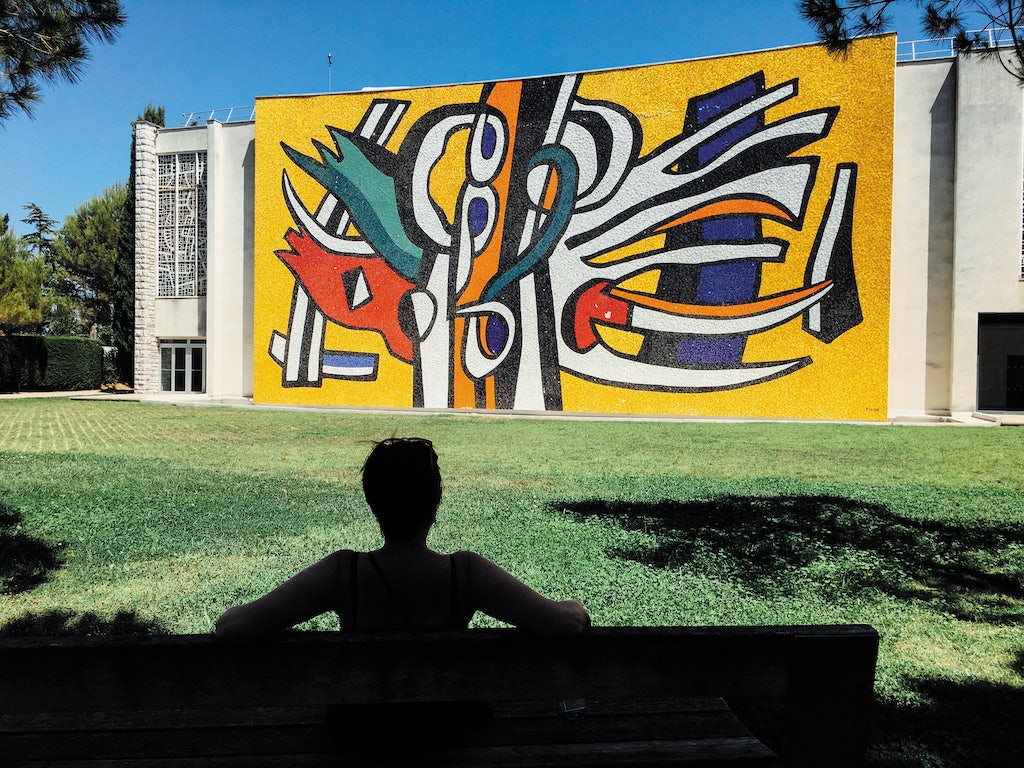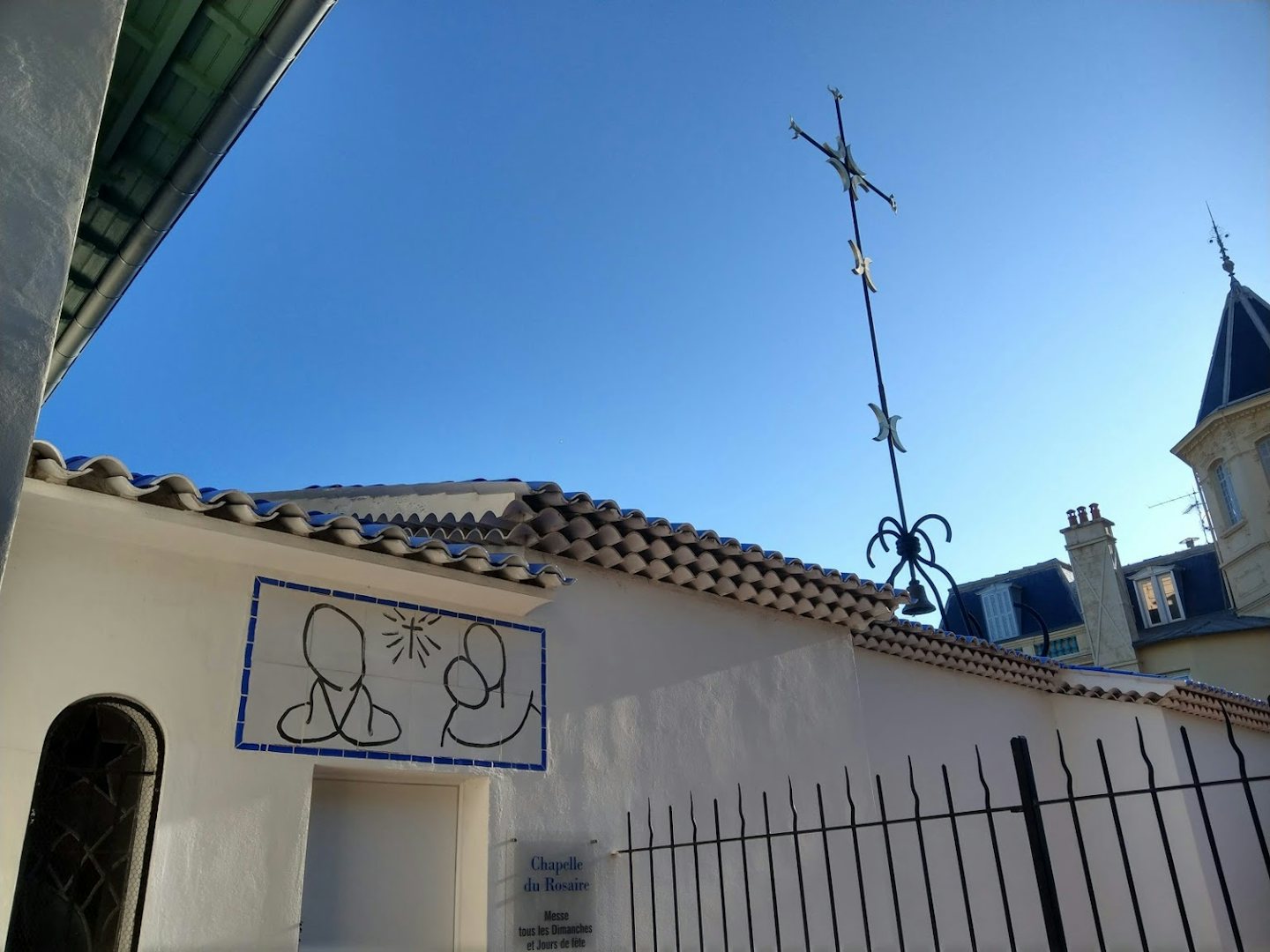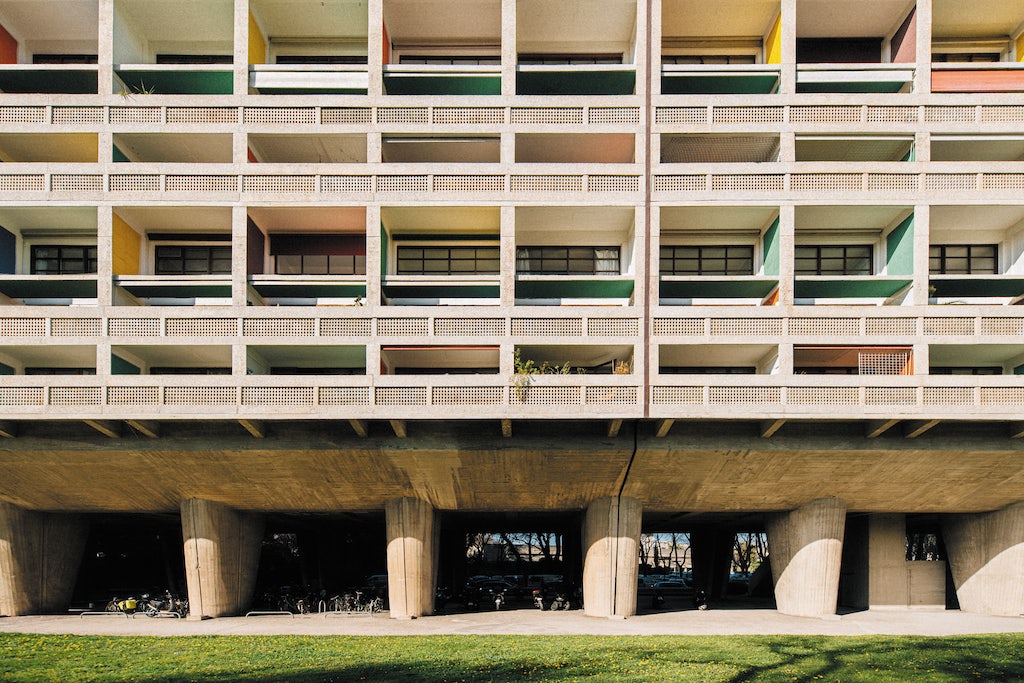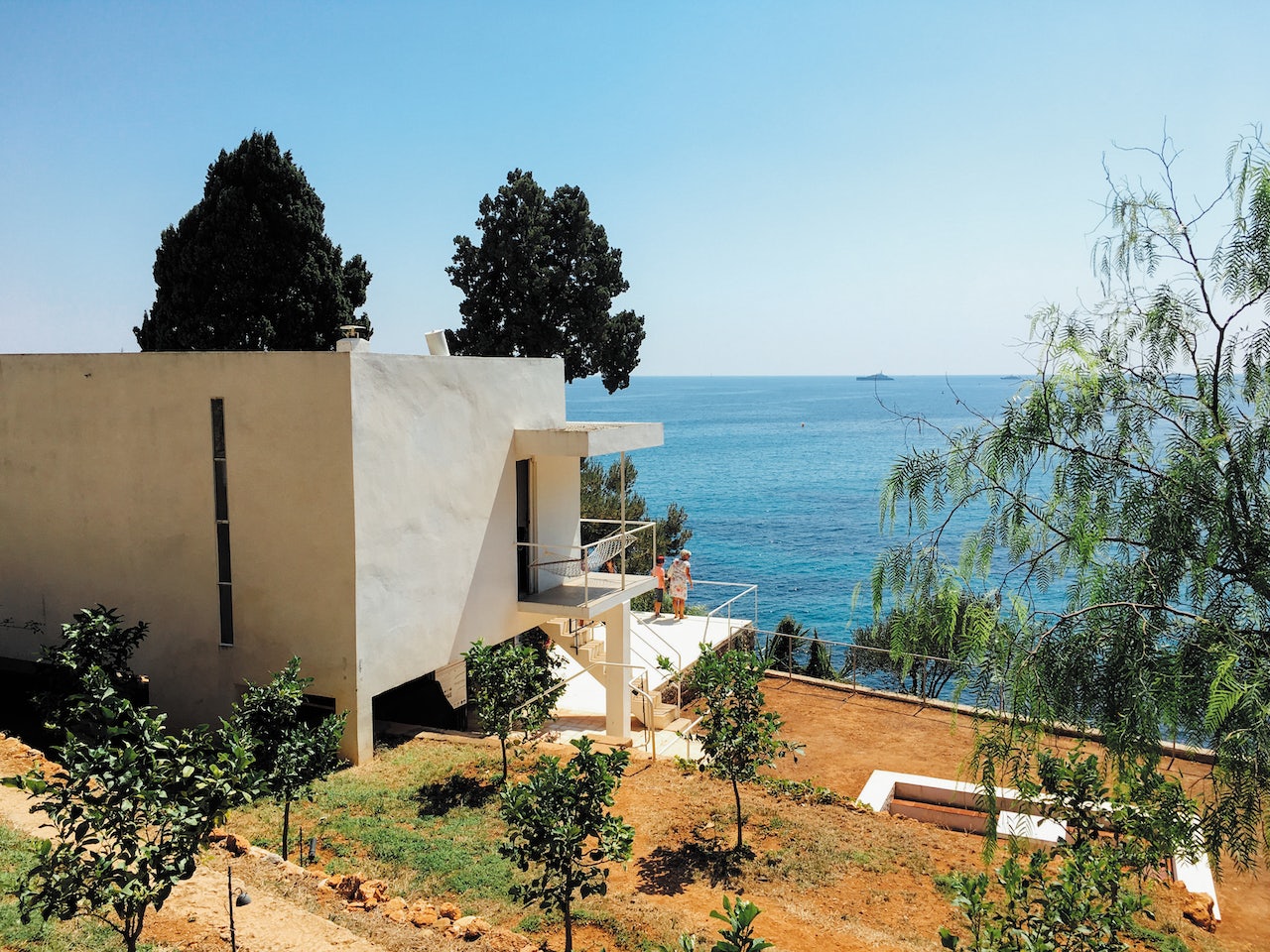Modernist buildings in The South of France for Art Lovers
1) Musée Fernand Léger
Expect the unexpected. This immense building, which is dedicated to the art of Fernand Léger, is located just outside the village of Biot (the ‘t’ is pronounced). The French-Russian architect Andreï Svetchine designed this monumental museum, which opened its doors in 1960, five years after Fernand Léger died. Shortly before his death, he had purchased some land, hoping to turn it into an open-air museum for his sculptures. His wife Nadia Léger decided to build a proper museum to showcase her husband’s work instead. The gigantic, colourful mosaics are just as eye-catching as the building’s monumental dimensions. The façade has been decorated with an oblong, 500-square- metre mosaic, after a design by Léger for the stadium in Hanover. The museum – a bright, open and airy space – offers an excellent survey of Léger’s oeuvre: the famous, boldly simplified treatments of workers and machines, which contributed to his fame, as well as his surprising, impressionist beginnings and the later abstract works. Léger’s political commitment to labour and freedom is manifested in all the works on display.

2) Chapelle Matisse
Henri Matisse regarded the Chapelle du Rosaire in Vence as his masterpiece and the crowning glory of his career. It is a Gesamtkunstwerk: the architecture, the large drawings on ceramic tiles, the stained-glass windows, the furniture and the liturgical robes have all been designed by Matisse. The simple but impressive chapel essentially is an ode to light, colour and space: the vivid yellow and blue stained-glass windows exquisitely reflect the light on the white marble floors. The story of how this chapel was built is also quite interesting. In 1942, Matisse underwent abdominal surgery, after which he advertised for a night nurse: Monique Bourgeois was a kindred spirit and soon became one of his models. Two years later, Monique entered the Dominican convent at Vence, a decision that greatly irritated Matisse, who was a liberal. They kept in touch, nonetheless. When the Dominican order of Vence wanted to build a new chapel, Matisse offered his assistance. He ended up taking on the entire project. His approach, the atypical architecture and, in particular, his unique, stripped- down and almost naïve treatment of the Stations of the Cross, with an emphasis on the brutality and horror of Christ’s suffering, gave rise to conflicts with the higher clergy. Monique – or soeur Jacques-Marie as she was now known – continued to support him, however. Picasso also waded into the fray: he did not understand why an atheist like Matisse would want to design a chapel. The chapel was inaugurated in 1951. By then, Matisse was too ill to attend. A deeply moving, intensely personal masterpiece, that has lost none of its power.

Franck Pregjer
More art in the South of France?
This guide contains more than 350 beautiful places worth visiting in the South of France if you love art. Available in our webshop now.
3) Cité Radieuse Le Corbusier
The French-Swiss architect Le Corbusier (pseudonym of Charles-Édouard Jeanneret) built this revolutionary, imposing and colourful block of flats between 1946 and 1952. It is 137 metres long, standing at a height of 56 metres and comprises 337 flats with 23 different layouts, for households of one to ten persons. Most flats are duplexes and extend from one side of the building to the other, meaning they get light and air, both from the city and the sea. Shortly after World War II, France had an acute housing shortage: an excellent opportunity for Le Corbusier to put his theories about a new way of living and the vertical city into practice. The concrete building rests on tall piles, ensuring people can circulate in the space beneath it. There are various shops on the third floor: a baker, the Le Ventre de l’Architecte restaurant, the Hôtel Le Corbusier and the Imbernon bookshop/publishing house, which sells an excellent selection of architecture books. The spacious rooftop terrace – an architectural gem with stunning panoramic views over Marseille and the sea – is occupied by a shallow paddling pool for children, a solarium, an open-air theatre and even a small school, which has since been converted into an artist’s residence. Part of the building can be visited freely, but you must obviously respect the residents’ privacy at all times. Request a guided tour and a visit of a model flat through the Office de Tourisme Marseille: www.marseille-tourisme.com.

4) Villa E-1027 Eileen Gray, Le Cabanon & Les Unités de Camping Le Corbusier
Is it a house or a small ocean liner at anchor? The Irish designer and architect Eileen Gray built her flat-roofed, concrete white villa – an icon of modernist architecture – between 1926 and 1929 among the rocks near the sea and Roquebrune-Cap-Martin, overlooking Monaco Bay. She designed the villa with her fellow architect and lover Jean Badovici, hence the villa’s peculiar name: E-1027. E stands for Eileen, while the figures refer to the letters of the alphabet: 10-J(ean), 2-B(adovici) and 7-G(ray). The villa seems much larger than it actually is, because of its hyperrational layout, the ingenious use of movable partitions, the central open living area and the large windows with a sea view. Eileen Gray designed everything herself, from the sofa down to the rugs on the floor. For all the work she put into it, she did not get to enjoy it that much after her split from Badovici. He inherited the house and occupied it until his death in 1956. In the meantime, one of Badovici’s good friends, the architect Le Corbusier frequently stayed at Roquebrune. He built his famous wooden Cabanon next to the villa: a simple ‘hut’ (measuring 3,66 by 3,66 metres), which was both primitive and ingenious, based on his anthropometric scale of proportions, called Modulor. He holidayed in his Cabanon for many years, in close proximity with nature. He would go on to build a series of colourful Unités de Camping, according to the same principles. The Villa E-1027, the Cabanon and the Unités de Camping can only be visited with a guide. You must book ahead. Parking near the meeting point – the train station of Roquebrune-Cap-Martin – is a perilous undertaking. You’re better to take the train.

5) Villa Noailles
This monumental, modernist hillside villa is situated in the hills that overlook Hyères, near the ruins of the old castle. It was built between 1923 and 1925, after a design by the architect Robert Mallet-Stevens. It is also one of the earliest examples of this modern style in France. The client, Vicomte Charles de Noailles, wanted an extremely functional home, stripped of any ornamentation, with as much daylight as possible. The many tiny rooms make it feel somewhat labyrinthine, however. Various influential designers contributed to the Villa, including Marcel Breuer, Theo van Doesburg, Eileen Gray and Charlotte Perriand. Since 2003, the Villa Noailles has become an exhibition space for architecture, fashion, design and photography. Parking near the villa can be quite complicated. The access roads are steep and narrow.

More art in the South of France?
This guide contains more than 350 beautiful places worth visiting in the South of France if you love art. Available in our webshop now.
JOIN THE HIDDEN SECRETS SOCIETY
Unlock a world of hidden gems. Sign up for free and gain access to over 4,000 addresses on our website. Plus, enjoy a 10% discount on all print guides and ebooks. Start exploring today!
Already a member? Log in. |
New here? Sign up. |